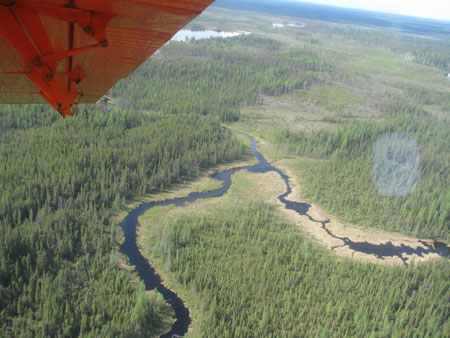
Credit: Jeff Wells
I wasn't sure that Eddie would be joining me today (Monday, June 23) for early morning bird surveys and sound recording as he didn't stir until I was out of the tent. The early mornings, late nights, and, of course, the paddling, had begun to make our eyes and aching backs beg our brains for just a few more minutes of sleep.
We recorded only until 7 this morning. The only new bird was a Golden-crowned Kinglet but we had lots of all the regulars—Winter Wren, Ruby-crowned Kinglet, Tennessee, Magnolia, Bay-breasted warblers, Swainson's Thrush, Red-eyed Vireo, Northern Waterthrush, Common Loons, Pileated Woodpecker.
Today, our last day on the water, we had a specific goal of recording sound samples from around the shores of Triangle Lake. The idea, and really the idea of our whole trip, was to preserve in audio recordings a sample of what a small part of the still road-inaccessible Boreal sounded like during the peak of summer bird song. I had been recording the natural sounds at our campsites each morning (and sometimes evenings) all along our route but today I wanted to get a more concentrated sample from around Triangle Lake before we met our float plane outside of Fort Hope.
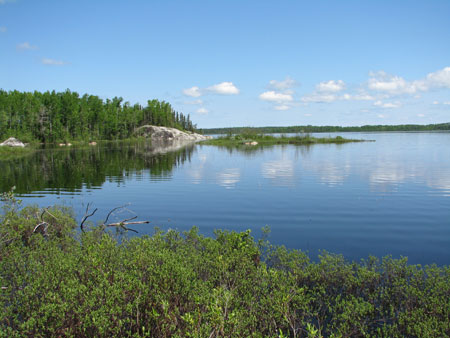
Triangle Lake
Credit: Jeff Wells
It was perfect canoeing and recording - weather with hardly a puff of wind so that the clouds and sky mirrored clean and clear on the water. We decided to leave our packed drybags on shore to pick up on the way out just to make it easier and faster paddling. Our first stop was almost directly across the lake from our campsite and it yielded what was surprisingly our first Gray Jay. A uniquely Boreal species, the Gray Jay is known by people who live and travel in the north as a familiar sight around campgrounds and places where it can mooch food. In this area, apparently the campsites were so infrequently used that the jays had not established routine visits to such places. Finding them up here meant stumbling on them by chance.
We spied the second stop from across a small bay. It was a large rock outcropping about 50 feet up above the lake shore, surrounded by spruces rising up from a thick carpet of lichen and moss. The acoustics were perfect here with the "teacher-teacher-teacher" of an Ovenbird ringing in from across the lake, the occasional cry of a Common Tern echoing from somewhere out over the water, a Northern Waterthrush singing from the shore below, and nearby in the spruces the soft flutey notes of a Swainson's Thrush.
A few more stops later (Eddie finally got a look at a Tennessee Warbler at one and a Ruffed Grouse and Bald Eagle called at another, though not while I was recording) and we headed back to pick up the rest of our gear and paddle toward Fort Hope. We passed a group of Bonaparte's Gulls and Common Terns on a log and some more feeding in a shallow bar area covered in small willows and grasses, now partially submerged because of the high water. Small flocks of Mallards rose up from the grasses and wheeled around us and settled down again after we had passed by. Soon the passage narrowed and we moved from the lake into the river outlet of Eabamet Lake with a surprisingly strong current flowing against us. In the middle of a hard upstream paddle I heard a new bird for the trip, the buzzy "zee-zee-zee-zoo-zee" of a Black-throated Green Warbler. It was early afternoon when we made it through to Eabamet Lake where Fort Hope was located a few miles across. The trip's first Hermit Thrush sang its lonesome song from a headland as we paddled by and then we heard the buzz of the big orange floatplane. We hadn't quite made it to Fort Hope but we were thankful when we saw the plane tip around and land on the water just ahead. Our pilot was an amazing guy who had learned to fly as a teen but had left flying to spend a career as a lineman for an electric company. There, while still in training, he had blown away part of his hand in an electrical accident but never quit. He had come back to flying again in later years and now flew year round across northern Ontario. After stowing our gear and loading our canoes on the pontoons, he picked up for the short hop across the lake to Fort Hope. Here Eddie hoped to interview someone from the community about their views of the changes that were likely to come if roads and logging eventually reach the Albany River and their community.
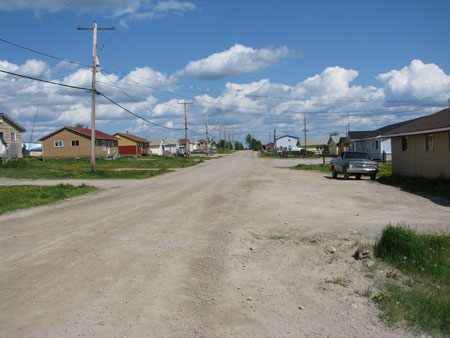
Fort Hope
Credit: Jeff Wells
It took three passes by the dock to get the ten or so kids who were swimming there to move back so we could get the plane in. The kids were having a great time, throwing in an empty water bottle and screaming and yelling as they leaped in to see who could get it first. Eddie went ashore to the First Nation offices for his interview while Per, Tim, and I walked up the dusty dirt road toward the general store and post office. I was surprised to see a European Starling here in town—a species that since its introduction to North American in New York City in the late 1800's has become one of the most common birds across the U.S. and southern Canada. Was this a harbinger of what was to come as industrial development creeps closer?
An hour later we were in the air again, watching the town's rows of houses and airstrip (there is regular air service here) fade into the distance, eventually looking like a small light spot among a sea of forest. We flew south over wilderness into the northern reaches of the Ogoki forest with lakes and streams and bogs and woods stretching away as far as we could see. The pilot spotted a pair of moose feeding on the edge of a dark stream and we circled around a few times for Per to try for some photos.
It was only about 25 miles from the unroaded, unfragmented forest through which the Albany River flows that we came to the edge of the final frontier. There below us were the access roads and massive clearcuts with towering stacks of spruce poles that had been trees. These trees could well be catalogs and junk mail by Christmas. It was a hard contrast from what we had just experienced.
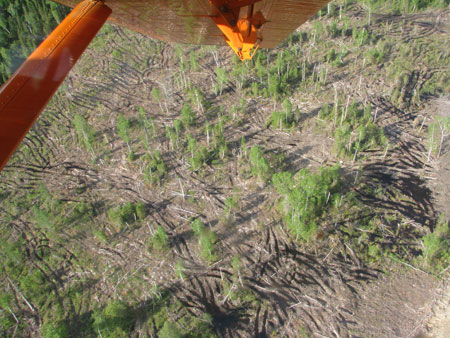
Credit: Jeff Wells
Later we looked at a map and discussed how roads are planned to reach parts of the area where we had just paddled, including Fort Hope, within the next 10-30 years. We had documented the birds and sounds of one of the world's last wild places. I wondered if there would be a day when stories, memories, and a few archived sound recordings would be all that was left.
Listen to some of my recordings from the morning at Camp 3:
![]() Clip 1 (listen)
Clip 1 (listen)
![]() Clip 2 (listen)
Clip 2 (listen)
![]() Clip 3 (listen)
Clip 3 (listen)
Also, take a look at the recent land conservation announcement by the Government of Ontario!
More trip pictures below:
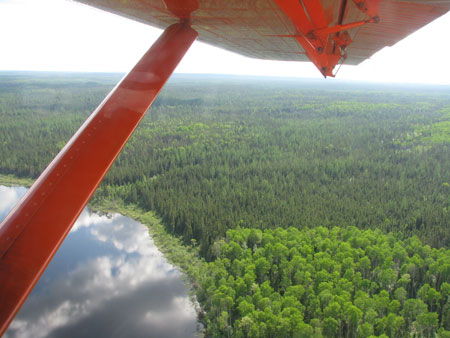
Aspen and Spruce
Credit: Jeff Wells
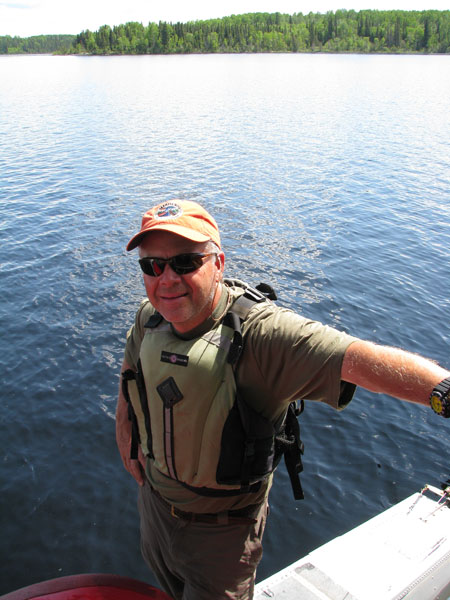
Eddie Nickens
Credit: Jeff Wells
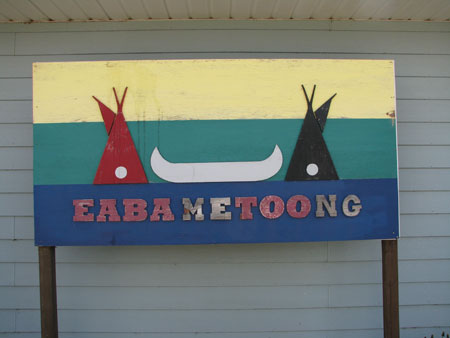
Credit: Jeff Wells
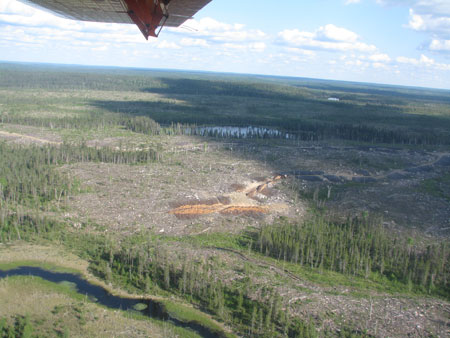
Logging aftermath
Credit: Jeff Wells
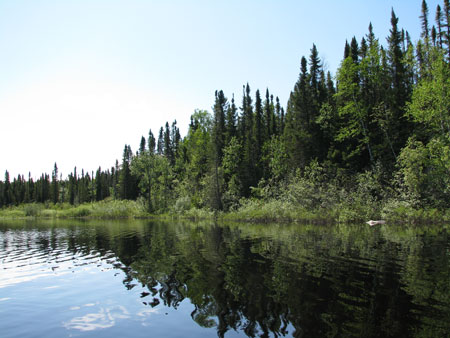
Triangle Lake
Credit: Jeff Wells
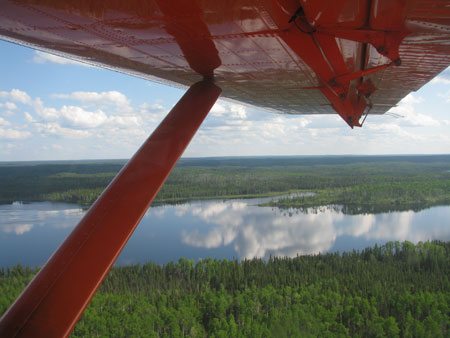
Credit: Jeff Wells
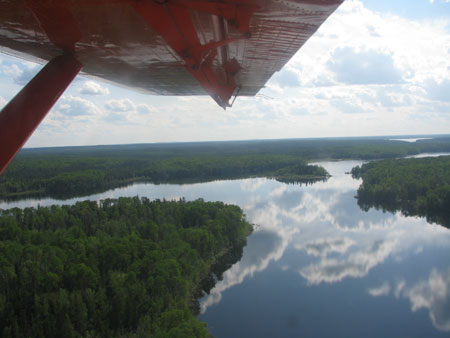
Credit: Jeff Wells

